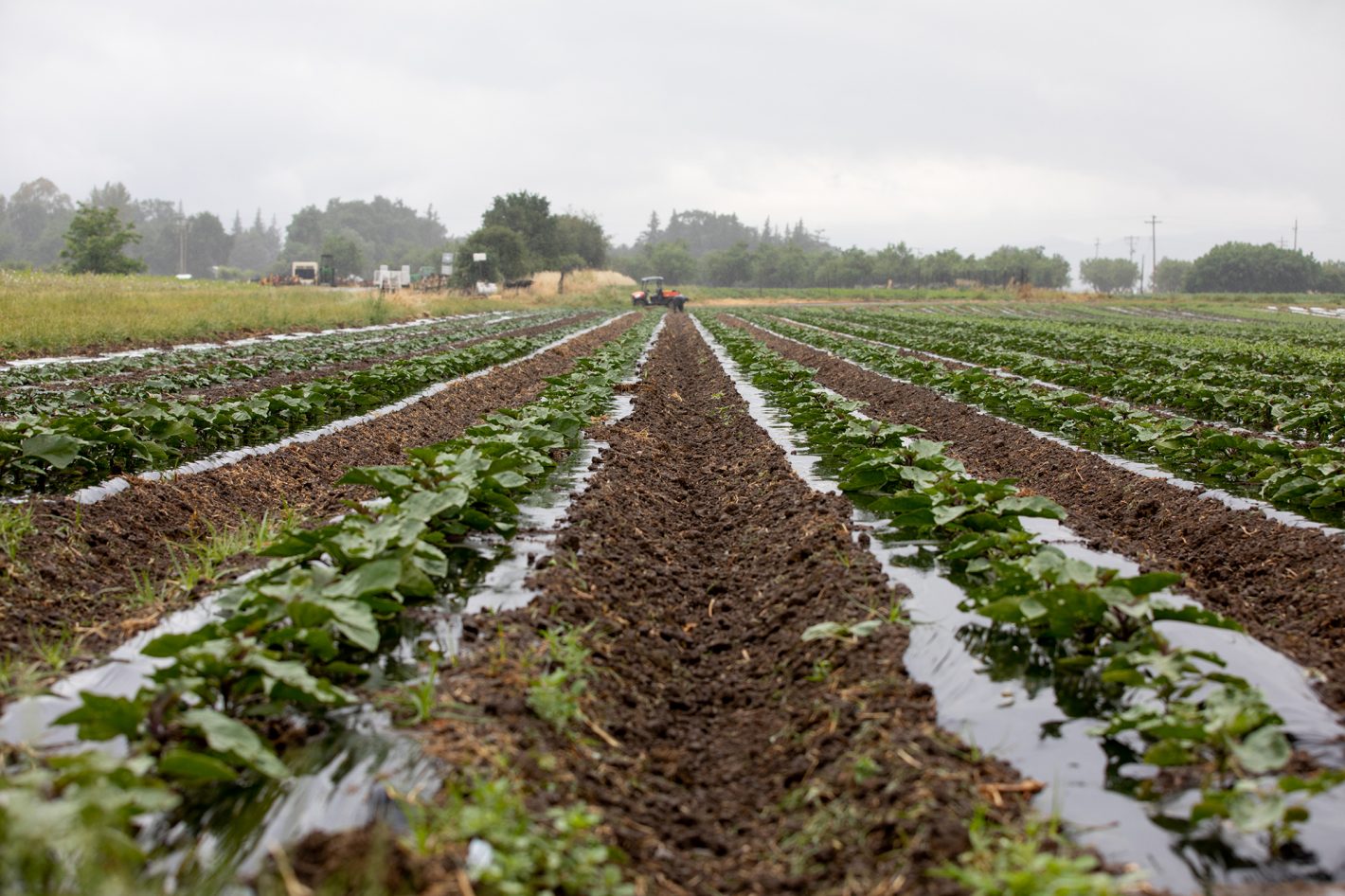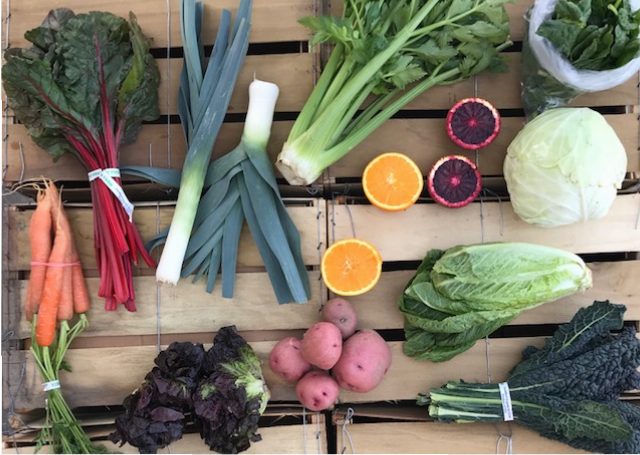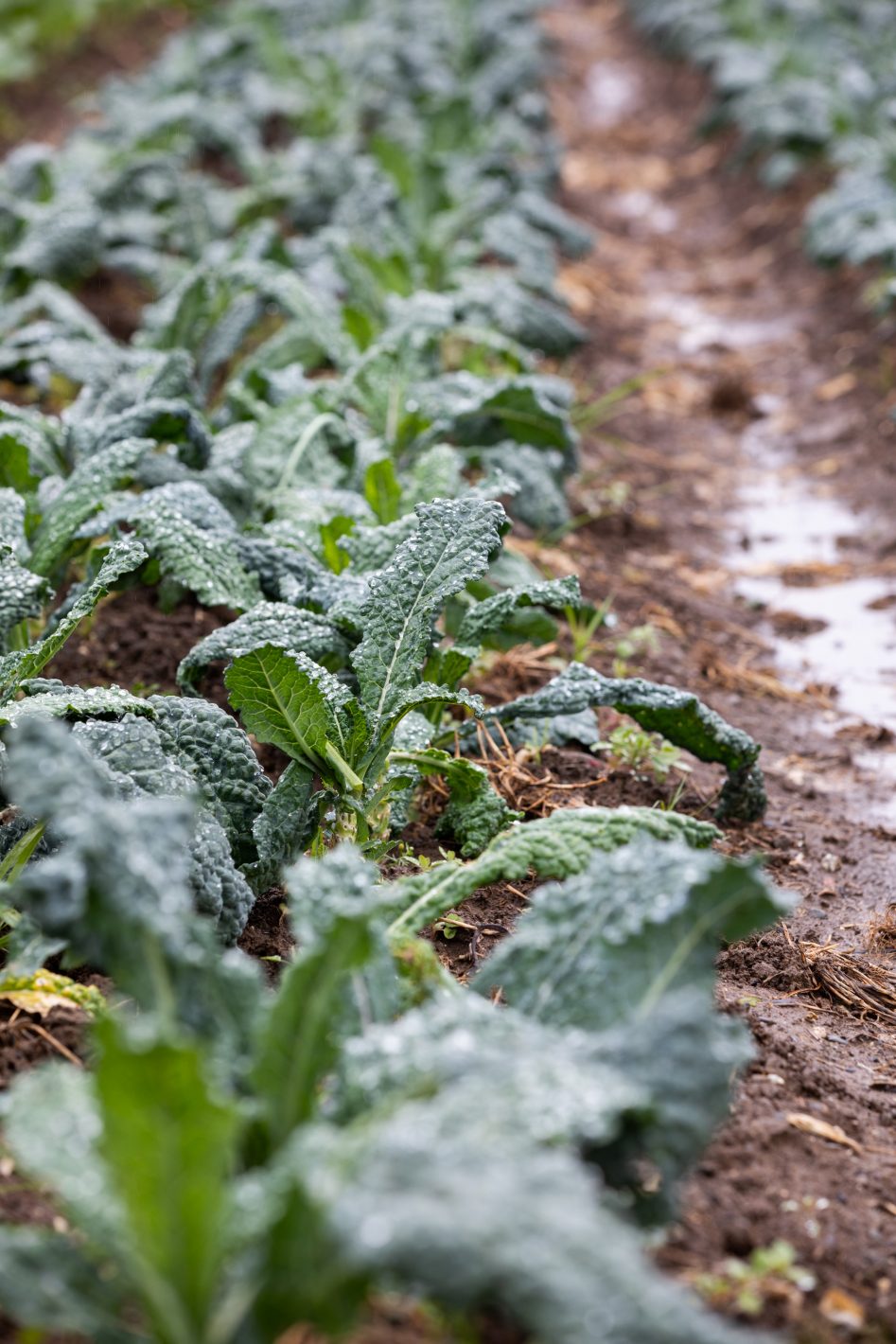 A farmer tending to the eggplants at Full Belly Farms. Photo by Ellen Baker
A farmer tending to the eggplants at Full Belly Farms. Photo by Ellen Baker
The American Dream once boasted Coca-Cola as an emblem of perfection. Post-World War II brought the creation of the Interstate Highway System along with the processed food industry—think Oscar Meyer and McDonald’s. TV dinners grasped consumers with gelatinous gravy atop a sort of mashed potato mound. And who remembers Tang? Times haven’t changed much, as I still see you at the grocery store grabbing that family-sized Gatorade mix, but who am I to judge? I love me some not-so-hearty frozen burritos every now and then.
The advent of seasonal, organic and local food is upon us, my friends. With the privilege of California living, I see no other option than to take full advantage. But how is eating seasonal, local and organic food advantageous to us? Why pay more, take more time, leave our hibernation dens to explore the vast colors of the Earth’s garden grown in our backyard? For starters, it gets you closer to Mama Nature, the heart and soul of this column.
Sacramento is blooming with local, organic farms that grow with the seasons and provide Community Supported Agriculture (CSA) subscriptions, aka boxes of local produce designed just for you. Countless farmers markets supply the goods provided by hard-working farmers, making it incredibly easy for us Sacramentans to support our local economy and care for our bodies.

A gathering of fresh produce from Terra Firma Farms. Photo courtesy Terra Firma Farms.
Seasonal
Eating with the seasons is an idea our society has almost completely obliterated until recently, which we have now dubbed, “The Paleo Diet.” The idea of seasonality is that the Earth’s natural cycle of produce is designed to support our natural cycle of life. A common side effect of eating seasonally is a more nutritionally varied diet—bring in the bok choy and kohlrabi in early spring and I’ll bet you’ll be looking online for some new recipes to incorporate your new found cabbage and leafy-greens. Aside from a varietal menu, our out-of-season produce lacks flavor and nutrients, creating an immunity to taste. Chef Kurt Michael Friese says that when we eat foods out of season, we’re less sensitive to the taste and quality of our food. “Our palate weakens just as our eyesight would if left in the dark for too long.”

The chickens at Full Belly Farms roam their personally made coop. Photo by Ellen Baker
Environmental
Food miles: the distance food travels from its growth origin to its consumer’s destination. The higher the miles, the greater the CO2 emissions. In a study by the Bioresource and Agricultural Engineering department of Iowa State University, conventional carrots travel approximately 1,838 miles to reach the state of Iowa as opposed to their locally grown carrots, which come from about 27 miles away. According to Josh Axe, a doctor of chiropractic, certified doctor of natural medicine and a clinical nutritionist, carrots are not the only food-causing greenhouse gases. Axe explains that on average, fruits and vegetables travel 1,300–2,000 miles to get from farms to consumers, while Chilean grapes travel 5,900 miles to the United States, and the cargo ships and refrigerated trucks used to ferry them emit 7,000 tons of pollution every year.

Flowers are prepared for bouquets at Farm Fresh To You. Photo courtesy Farm Fresh To You.
Local
Produce that is locally grown typically equates to a highly enriched product. Local fruits and veggies are so immediately available, they don’t lose their nutritional substance like those of conventional produce, which are commonly picked before completely ripening, leading to a lack in nutritional value, in order to survive long-distance travel. According to research from the University of California, Davis, two-thirds of Vitamin C is lost from spinach and green beans within a week of harvest. Data from the 2007–2010 National Health and Nutrition Examination Survey (NHANES) shows the decline of our vitamins in a study of 16,000 Americans age four and older, who show below-average nutrient intakes of vitamin D, E, A, C, calcium and magnesium. Americans are overfed yet undernourished.
We have become disconnected from our food and its origins due to global commerce that allows transportation of food from all over the world to arrive at our fingertips in an instant, no matter the season. Rebuilding the local farming market enables a connection to not only our food, but also our community. Investing in your health now could not only save you from that doctors visit down the road, but also reduce pollution and put money into your local economy. It’s a win-win.
Find your CSA box or farmers market goods from Full Belly Farms, Terra Firma Farms, Farm Fresh To You, Good Hummus and Soil Born Farms, to mention a few!

A rainy spring day leaves water droplets on kale at Full Belly Farms. Photo by Ellen Baker
**This piece first appeared in print on page 12 of issue #292 (May 22 – June 5, 2019)**


Comments